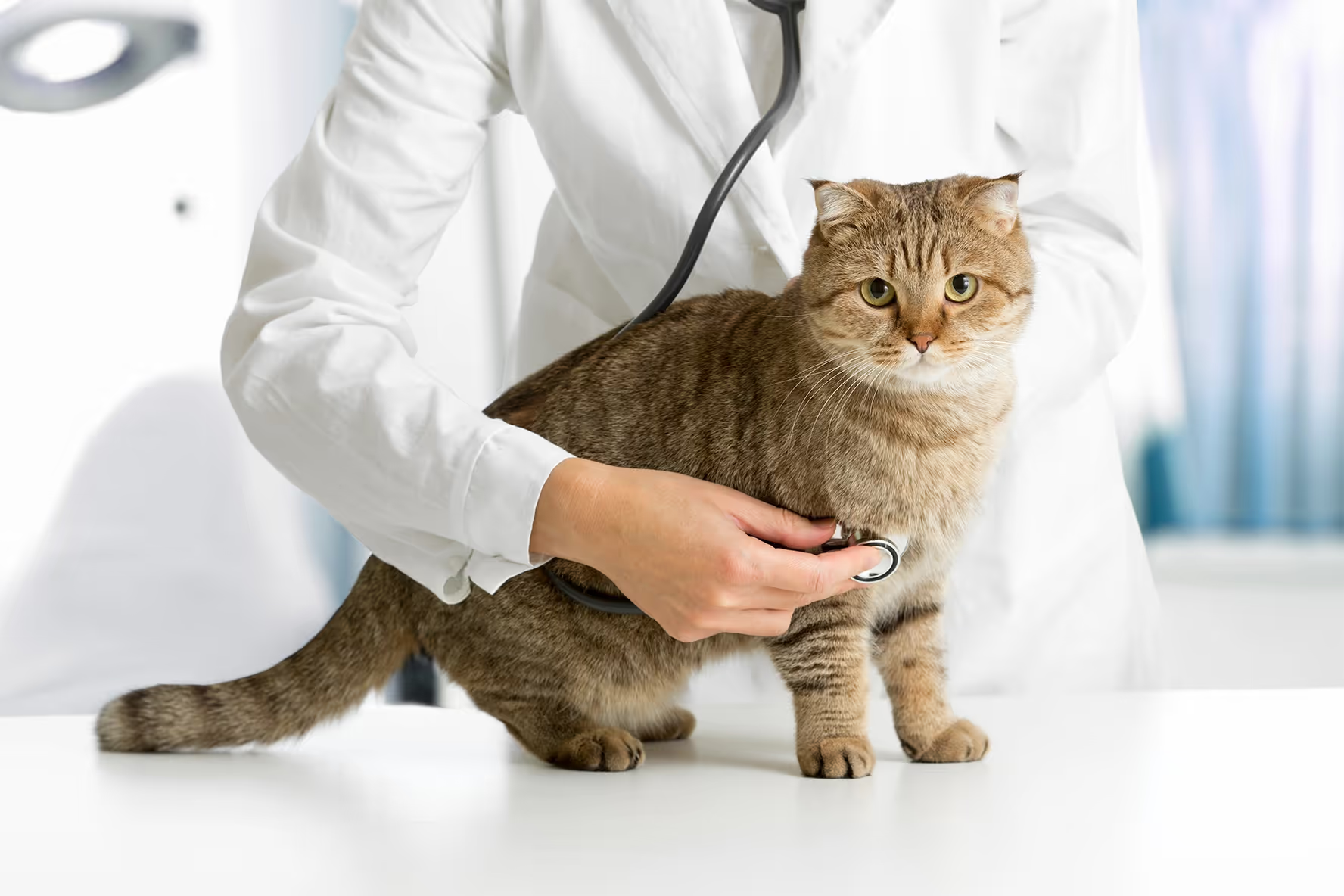The Feline Lymphatic System: Understanding Cat Lymph Nodes and Alimentary Lymphoma

When it comes to the health of our feline family members, understanding their lymphatic system and its role in their overall well-being can be both fascinating and important.
What is the Lymphatic System and How Does It Work in Cats?
The lymphatic system is a crucial part of the immune system in all mammals, including cats. Its main job is to help the body fight infections and maintain fluid balance. You can think of it as a vast network of vessels and nodes that work behind the scenes to keep your cat healthy.
Lymphatic vessels carry lymph—a fluid rich in white blood cells—throughout the body. This system acts as a highway, transporting cells that fight off harmful invaders like bacteria and viruses.
Beyond its immune functions, the lymphatic system also helps maintain fluid levels in the body by collecting excess fluid from tissues and returning it to the bloodstream. This process prevents swelling and ensures that tissues remain hydrated and healthy. Additionally, the lymphatic system plays a role in fat absorption from the digestive tract, where specialized lymphatic vessels called lacteals absorb dietary fats and transport them to the bloodstream.2
In cats, the lymphatic system’s proper functioning is essential for their overall health. Any disruption in this system, whether due to infection, inflammation, or disease, can have far-reaching effects on a cat’s well-being. By understanding how the lymphatic system works, cat owners can better recognize when something might be wrong and seek timely veterinary care.
Key Components of the Lymphatic System:
- Lymph Nodes: Small, bean-shaped structures that filter lymph and house immune cells. These nodes act as checkpoints, trapping harmful substances and preventing them from spreading throughout the body.
- Lymph Vessels: Tubes that carry lymph fluid. These vessels form a network that extends throughout the body, ensuring that lymph is transported to and from lymph nodes and other organs.
- Spleen: An organ that filters blood and produces immune cells. The spleen also helps remove old or damaged red blood cells, contributing to overall immune health.
- Thymus: Where some immune cells mature. This organ is particularly important in young cats, as it plays a role in developing a strong and functional immune system.
- Bone Marrow: Produces blood cells, including immune cells. Bone marrow is a vital component of the lymphatic system, as it generates the cells needed to fight infections and maintain immune balance.
What are Cat Lymph Nodes, and Where Are They Located?
Lymph nodes are scattered throughout a cat’s body, acting as checkpoints where lymph is filtered, and immune responses are triggered. If you’ve ever noticed your vet feeling around your cat’s neck or under its arms, they’re likely checking these lymph nodes for signs of swelling or abnormalities.
Lymph nodes are essential for monitoring and responding to potential threats in the body. When the immune system detects an infection or injury, lymph nodes will swell up as they produce and store additional immune cells to fight off the problem. This swelling, known as lymphadenopathy, is a visible sign that the body is actively defending itself.
Common Cat Lymph Node Locations:
- Submandibular Lymph Nodes: Located under the jaw, these nodes are the easiest to feel if they become swollen. They are often involved when a cat has dental or upper respiratory infections.
- Prescapular Lymph Nodes: Found in front of the shoulders, these nodes help monitor infections or inflammation in the front limbs and chest area.
- Axillary Lymph Nodes: Located in the armpit area, these nodes are less commonly noticed unless significantly swollen. They are involved in filtering lymph from the chest and front legs.
- Inguinal Lymph Nodes: Situated in the groin region, these nodes filter lymph from the back legs and lower abdomen. They can become swollen in cases of infections or injuries affecting these areas.
- Popliteal Lymph Nodes: Found behind the knees, these nodes are responsible for monitoring lymph from the lower hind limbs.

Knowing where these lymph nodes are located can help cat owners identify potential health issues early. If you notice swelling or tenderness in any of these areas, it’s a good idea to consult your veterinarian for further evaluation.
Swollen Lymph Nodes in Cats
When a cat’s lymph nodes are swollen, it usually means that the immune system is working hard to fight off an infection, inflammation, or even cancer. This swelling response is called lymphadenopathy. While swollen lymph nodes can occur anywhere in the body, they’re most noticeable in areas like the neck.
Swollen lymph nodes can vary in size and texture, depending on the underlying cause. They may feel soft and tender, or firm and fixed in place. The severity and duration of the swelling also provide clues about the potential cause. For example: mild, temporary swelling might result from a minor infection, while persistent or severe swelling could indicate a more serious condition.
Common Causes of Swollen Lymph Nodes:
- Infections: Bacterial, viral, or fungal infections can trigger lymph node enlargement. Examples include upper respiratory infections, abscesses, or systemic illnesses.
- Dental Issues: Infections in the teeth or gums can cause the submandibular nodes to swell. Dental diseases like gingivitis or abscessed teeth are common culprits.
- Allergies: Sometimes, allergic reactions can lead to mild swelling. These reactions might be triggered by environmental allergens, food sensitivities, or insect bites.
- Lymphoma: A type of cancer that originates in the lymphatic system. Swollen lymph nodes are often one of the first signs of this disease in people and dogs. Cats more commonly have stomach upset and changes in their gastrointestinal lymphatic system secondary to this cancer.
Recognizing the signs of swollen lymph nodes and understanding their potential causes can help you act quickly to address your cat’s health needs. Early intervention is often key to successful treatment and recovery.
Alimentary Lymphoma in Cats: The Most Common Lymphoma
What is Alimentary Lymphoma?
Alimentary lymphoma is the most common type of lymphoma in cats. It specifically affects the gastrointestinal (GI) tract and nearby lymph nodes. This cancer develops when lymphocytes—a type of white blood cell—grow uncontrollably and form tumors. While the exact cause isn’t always clear, certain risk factors, like feline leukemia virus (FeLV) or feline immunodeficiency virus (FIV), can increase the likelihood of developing lymphoma.
Alimentary lymphoma can occur at any age but is most commonly diagnosed in middle-aged and older cats. It can affect any part of the GI tract, from the stomach to the intestines, and may also involve the mesenteric lymph nodes, which are located near the intestines. The progression of the disease and its symptoms can vary depending on the location and size of the tumors.1
Symptoms of Alimentary Lymphoma
Since alimentary lymphoma targets the digestive system, symptoms often mimic those of other GI issues. If your cat shows these signs, it’s essential to consult a veterinarian:2
- Chronic Vomiting and Diarrhea: These are hallmark symptoms of alimentary lymphoma. Vomiting may occur intermittently or become more frequent as the disease progresses.
- Weight Loss: Cats with lymphoma may lose weight rapidly due to a combination of reduced appetite and poor nutrient absorption.
- Appetite Changes: Some cats may stop eating, while others may become picky eaters. Loss of appetite is a common early sign.
- Lethargy: A noticeable drop in energy levels. Affected cats may spend more time sleeping or avoiding activities they once enjoyed.
- Abdominal Swelling: This can occur if tumors are large. Swelling may be accompanied by discomfort or pain, making the cat more sensitive to touch.
Diagnosis of Feline Lymphoma
To diagnose alimentary lymphoma, your veterinarian may perform several tests, including:
- Physical Exam: Checking for swollen lymph nodes and abdominal masses. A thorough physical exam can reveal signs of discomfort or abnormalities.
- Blood Tests: Assessing overall health and looking for signs of anemia or infection. Blood tests may also help rule out other conditions.
- Ultrasound: Imaging to visualize the GI tract and detect abnormalities. Ultrasound can provide detailed information about the size and location of tumors.
- Biopsy: A sample of the affected tissue is examined for cancer cells. Biopsies are often necessary to confirm the diagnosis and determine the type of lymphoma.
Treatment Options for Feline Lymphoma
While lymphoma is serious, treatments are available that can extend a cat’s life and improve its quality of life.
- Chemotherapy: This is the most common treatment for feline lymphoma. While it’s not a cure, chemotherapy can lead to remission in many cases. Treatment protocols are tailored to each cat, with the goal of minimizing side effects while maximizing effectiveness.
- Steroids: Medications like prednisone are often used to reduce inflammation and slow cancer progression. Steroids can also help improve appetite and overall comfort.
- Surgery: In rare cases, removing localized tumors may be an option. Surgery is typically considered when tumors are causing significant obstruction or discomfort.
How to Keep Your Cat’s Lymphatic System Healthy
Preventative care is key to supporting your cat’s lymphatic system and overall health. Here are some tips:
- Regular Vet Checkups: Early detection of issues like swollen lymph nodes can make a big difference. Regular checkups allow your veterinarian to monitor your cat’s health and catch problems early.
- Vaccinations: Protect your cat against FeLV and FIV. Vaccinations are an essential part of preventive care and can reduce the risk of serious illnesses.
- Dental Hygiene: Keep your cat’s teeth clean to avoid infections that could affect lymph nodes. Regular brushing and professional dental cleanings can prevent dental diseases.
- Healthy Diet: A balanced diet supports the immune system. Providing high-quality cat food with the right nutrients can help maintain overall health.
- Parasite Control: Prevent fleas, ticks, and intestinal parasites, as these can trigger lymphatic issues. Use veterinarian-recommended parasite prevention products.
When to Worry About Swollen Lymph Nodes
Not all swollen lymph nodes are a cause for alarm, but you should see a vet if:
- The swelling persists for more than a week. Persistent swelling may indicate an underlying issue that requires attention.
- Your cat has additional symptoms like fever, lethargy, or loss of appetite. These symptoms could signal a more serious problem.
- The swelling is firm, irregular, or rapidly increasing in size. Unusual characteristics of the swelling may point to a more serious condition, such as cancer.
ImpriMed is here to help
Understanding your cat’s lymphatic system and the role of lymph nodes can help you better care for your furry friend. While swollen lymph nodes can be a sign of something as simple as an infection, they can also indicate more serious conditions like alimentary lymphoma. By staying vigilant and working closely with your veterinarian, you can ensure your cat remains as healthy and happy as possible.
ImpriMed is a precision veterinary medicine company that works specifically with dogs and cats with lymphoma to get the best treatment possible.


